Are you sitting comfortably? Best bike saddles 2025 ridden and reviewed
Choosing a saddle is no easy task. We select the best of the bunch to help you find the right one for you
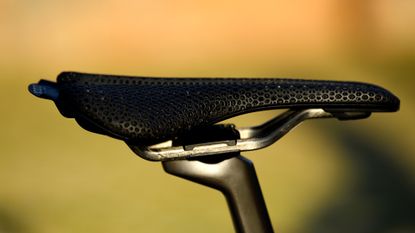
- Quick list
- 1. Best overall
- 2. Best long-nosed saddle with cut out
- 3. Best 3D printed long-nosed saddle
- 4. Best short-nosed saddle for racers
- 5. Best short-nosed saddle for comfort
- 6. Best saddle for rough roads
- 7. Best long-nosed saddle for value
- 8. Best saddle for gravel riders
- 9. Best saddle for time-triallists
- How to choose
- How we test

Best bike saddles 2025: Jump Menu
The list in brief ↴
1. Best overall bike saddle
2. Best long-nosed bike saddle with cut-out
3. Best 3D printed long-nosed bike saddle
4. Best short-nosed bike saddle for racers
5. Best short-nosed bike saddle for comfort
6. Best bike saddle for rough roads
7. Best long-nosed bike saddle for value
8. Best bike saddle for gravel riders
9. Best bike saddle for time-triallists
How to choose
How we test
Even if you've only been cycling for a short time, it's likely that you'll already appreciate that there isn't one saddle to suit all. Take into account anatomical differences, riding style and chosen discipline and it's little wonder that one person's ideal perch can be entirely unsuitable for another.
All of which goes to say that finding the best bike saddle for you isn't straightforward. But given that it can make the difference between an enjoyable ride and a pretty miserable one, it's worth spending some time to get it right.
Men and women tend to favour different designs, this guide looks at men's saddles, and we also have a dedicated guide to the best women's saddles.
From there you'll need to think about the kind of riding you do, whether it's long rides on the road, a short commute to work, or hitting gravel trails.
We've reviewed a huge number of saddles across a wide range of styles and price points. Below are our chosen few, selected with the aim of offering a variety of options to take into account the many nuances of the category.
After that we've a detailed guide to how to choose the right saddle for you, and it's well worth a read before you make your purchase.
The quick list
In a hurry? Here's a brief overview of the bike saddles on this list, along with quick links that let you jump down the page directly to a review of whichever bike saddle catches your eye.
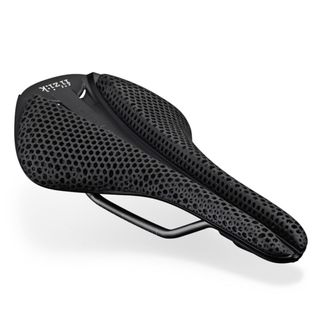
The best bike saddle overall
Featuring 3D printed zonal cushioning and a full length pressure relief channel, the Antares Versus Evo saddle is light, exceptionally comfortable...but expensive.
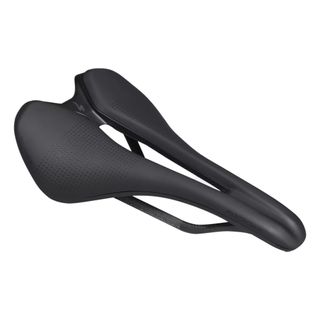
The best long-nosed bike saddle with cut-out
With a long shape that allows for different riding positions and a generous cut-out to help relieve pressure, the Romin Evo Pro is comfortable, especially over long distances.
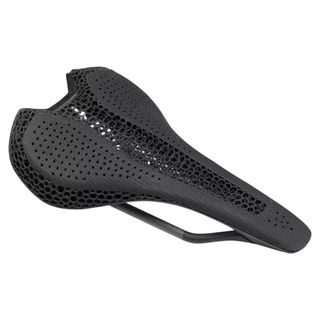
The best 3D printed long-nosed bike saddle
The Romin design delivers both pressure relief and the room to move about on the saddle. The 3D printed version accentuates both, extending support and increasing comfort.
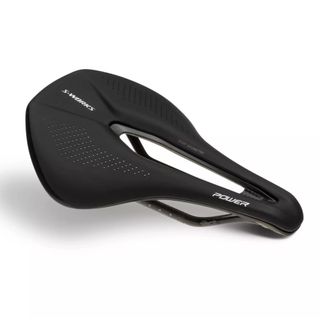
Best short-nosed saddle for racers
Designed with racing in mind, the S-Works Power model matches a short nose with a large cut-out to aid an aggressive riding position without sacrificing comfort.
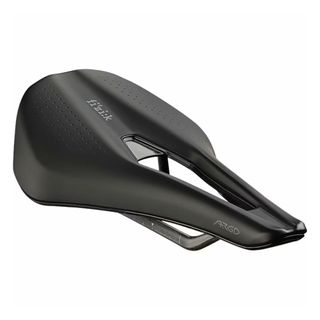
Best short-nosed saddle for comfort
While the short nose design is suited to an aero riding position, the pressure relief channel and additional padding makes this a good choice for longer rides too.
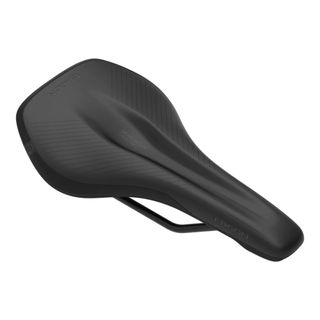
Best saddle for rough roads
Equipped with 'high-rebound' foam, this all-road saddle delivers a comfortable ride across a range of surfaces thanks to its ability to absorb road and trail chatter.
Our pick of the best bike saddles
You can trust Cycling Weekly.
The best bike saddle overall
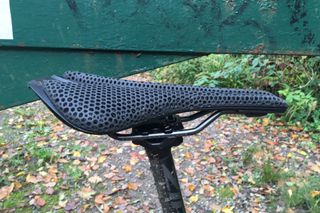
Specifications
Reasons to buy
Reasons to avoid
The Fizik Antares Versus Evo R3 Adaptive saddle features the Italian brand's 3D printed padding, which creates the distinctive honeycomb appearance. It's a high-tech manufacturing process that allows for the creation of what Fizik calls 'zonal cushioning', that's firmer in places and softer in others, allowing it to adapt to the specific cyclist's body.
It also features a full length pressure relief channel, a carbon reinforced nylon shell that's adds some flex and 7x7 kium hollow rails. The combination adds up to a saddle that weighs 217 grams in the 139mm width version that we tested.
On review we found the saddle to be very comfortable, with both the zonal cushioning and relief channel performing as you'd hope. Despite the appearance the holes in the padding made it pretty easy to clean dirt from the saddle with a quick spray of water.
In fact the only downside to the adaptive Antares saddle is the price, which is north of $250 / £250 unless you're lucky enough to find it on discount.
Read more: Fizik Antares Versus Evo R3 Adaptive saddle full review
The best long-nosed bike saddle with cut out
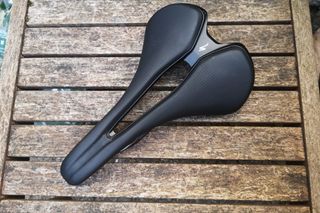
A good saddle for people who like to love around on the bike
Specifications
Reasons to buy
Reasons to avoid
The Romin Evo is a long-nosed saddle, suited to riders who like to move around on the bike, sitting on the nose during efforts and placing their weight back on the climbs.
We're generally fans of saddles with an ample cut-out, and we found that this one did the job, despite being relatively narrow.
Specialized has used 'level 2 padding', and tested over rides of four hours+, we found this to be sufficient. The upper is made from a water-resistant Micromatrix material, which is resiliant and also quite aethetically pleasing.
The saddle comes in three widths (143mm, 155mm and 168mm - we tested the latter), which should provide plenty of choice to suit most bodies.
Initially marketed as a men's saddle, we've had male and female testers get on with this option - suggesting it has a wide appeal.
Read more: Specialized Romin Evo Pro saddle full review
The best 3D printed long-nosed bike saddle
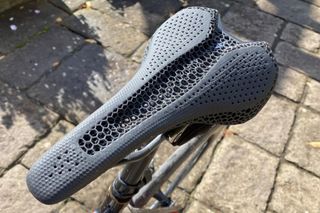
Specifications
Reasons to buy
Reasons to avoid
Made up of thousands of 3D printed struts and nodes to help distribute pressure, Specialized’s beloved long-nosed Romin Evo design is now available with the brand’s Mirror technology. The result is an extremely comfortable saddle which, rather than feeling like you’re ‘perched on top’, you almost feel like you’re ‘sitting in’.
We found that this made for a more connected feeling with the bike, with high-power seated efforts feeling very planted. At the same time, road vibrations were a little more absorbed and not transferred to our rear. The saddle is also very lightweight for one that is so comfortable, at 192g (measured) in a 143mm variant.
The length of the Romin design works well for performance orientated riders who want to move their weight around as the effort dictates. Although an expensive saddle, its price is about the same level as rivals using similar 3D printed tech, but it is still a significant hike over similarly weighted saddles, such as the S-Works Romin Evo (without Mirror).
Read more: Specialized S-Works Romin Evo with Mirror saddle full review
The best short-nosed bike saddle for racers
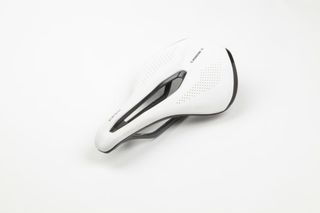
The Power has proved a hit with many riders
Specifications
Reasons to buy
Reasons to avoid
The Specialized Power was the saddle that kicked off the short and stubby trend that has since seen just about every saddle brand launch their own version. We reviewed the S-Works model but there are other price bracket options available too.
With a wide profile and sizable pressure relieving cutout, we'd suggest this is best suited to those who ride in an aggressive position, or spend a lot of time in the drops. An oft-reported downside of the Power is that the rear fans out, and can rub against some riders' hamstrings; if this is the case for you, then we'd recommend looking at the Power Arc, a variation which avoids this via a more rounded rear.
Overall, the Power saddle has collected a high number of converts across the Cycling Weekly team. It might not be everyone's absolute favourite, but it's rare to hear a rider say they find it uncomfortable. If you like to fix yourself into a set position on the bike, then we believe it's a solid option and well worth a try.
Read more: Specialized S-Works Power saddle full review
The best short-nosed bike saddle for comfort
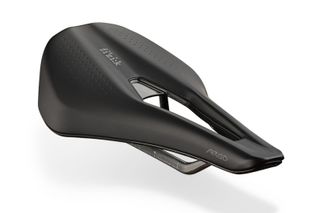
Another addition to the growing range of short-nosed saddles
Specifications
Reasons to buy
Reasons to avoid
A short-nosed saddle which might feel a bit strange if the stubby genre is new to you, but we found the design incredibly comfortable.
Since you're encouraged to sit in a static position, the set up can take a little longer but it's well worth the effort. There are not many saddles that we've sat upon that offered us so much comfort.
This saddle is well suited to both road and time trial riding, as it really locks the cyclist into a set position, helping them to stay put throughout the effort.
Compared to other short nose saddles, we found that a little additional padding on this version worked well and provided added comfort. The large cut out also added to overall satisfaction, and the squared off nose means you shouldn't experience issues with chafing at the front.
For those who like stubby saddles, and want a large cut out and a little more padding, this could be a winner, and from a value perspective, this one comes in lower than competitors.
Read more: Fizik Tempo Argo R1 saddle full review
The best bike saddle for rough roads
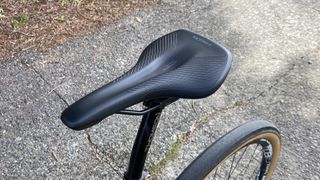
Specifications
Reasons to buy
Reasons to avoid
Although you can use a road saddle for riding off-road and many gravel bikes come fitted with a road model, there are benefits in a gravel-specific saddle design.
The Ergon SR Allroad saddle includes a layer of high-rebound foam between the upper orthopaedic foam layer and the base of the saddle, designed to improve shock absorption. Ergon offers two widths and versions with lighter rails and base than the Core line, which is quite weighty at 288g.
Although marketed as a gravel saddle, we rode it on our road bike, where the effect of the extra layer of padding was easier to isolate than on a fatter-tired machine.
A disadvantage of the Ergon saddle, at least for women riders, is that it comes in a men's fit only.
Read more: Ergon SR Allroad Core full review
The best long-nosed bike saddle for value
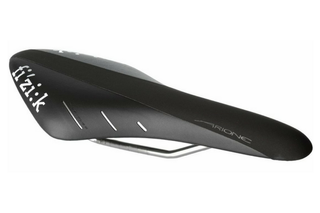
One of the most popular men's road bike saddles
Specifications
Reasons to buy
Reasons to avoid
Fizik is famous for categorizing its saddles based upon flexibility and riding style. The Arione is suited to flexible riders and is quite a narrow perch, so it's best for the racer with a long and low ride position, which is why it's perennially popular with the pros.
The length provides plenty of room for a rider to move around and shift their weight as they climb and descend and to alter their position for comfort on long, fast days in the saddle, but the narrow width means it won't suit everyone. It does make the Arione a bit heavier than other saddles at its price though.
The Arione is an extremely popular saddle that suits a great many riders. There are narrower and slightly wider options, as well as a Versus option with a pressure relief channel and a Donna women's version in the Arione family.
Read more: Fizik Arione R1 Versus Evo Regular saddle full review
The best bike saddle for gravel riders
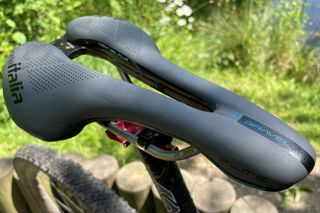
Specifications
Reasons to buy
Reasons to avoid
Given Selle Italia have around 16 versions of the Flite saddle it should come as no surprise that there is now a gravel-specific version added to the range. At first it's easy to see the Flite Gravel as just a marketing exercise. However, taking a bit of time to look beyond this you realise its a combination of various features that are best suited to longer drop-bar off-road rides, a sort of merger of the Endurance and MTB versions of the Flite.
The Superflow channel provides pressure relief to the perineum when in the drops, particularly important on chattery terrain. Additional shock absorbency comes from a combination of the gel inserts and titanium rails. The covering material is Fibra-Tek which offers increased durability against gritty abrasion.
We were really impressed by the comfort of the Flite, the Superflow shape and choice of widths meant that weight was through sit bones where it should be. We found that the shorter length (250mm, standard across all Flites) allowed good movement around the bike although means your weight isn't so far forward if you want to perch on the nose of the saddle on steep climbs.
Read more: Selle Italia Flite Boost Gravel TI 316 Superflow full review
The best bike saddle for time-triallists
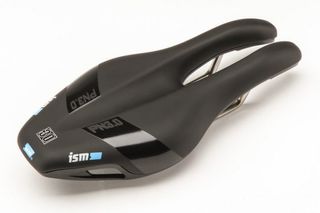
The noseless design is popular among time triallists
Specifications
Reasons to buy
Reasons to avoid
ISM saddles are renowned for serving time trial riders particularly well, due to the split-nose design. In essence, the lower you get on the tri-bars, the better the saddle feels - which is typically the opposite with many conventional saddles. The result allows you to stay in your aero position with greater comfort.
For this reason, we gave the saddle full marks when we tested it a while back. We loved the comfort it gave us, even when suffering through 20-minute FTP intervals on the turbo! It's worth noting that setting up an ISM saddle will be different to setting up a standard saddle as it works better when set further back on the seatpost, so check the instructions. Most dealers offer test saddles if you want to try one out before you buy.
Could the ISM saddle work well on the road? If you're looking for saddle that promotes a tucked aero position and then allows you to hold it in comfort, then yes - although the heavier weight compared to regular road saddles could be off-putting, especially if you're into all-riding and saving grams.
Read more: ISM PN 3.0 saddle full review
How to choose the best bike saddle for you
What causes saddle discomfort?
Discomfort in the saddle varies between riders, but among male riders is often the result of a saddle that is too narrow.
We all have different-width ‘sit-bones’. The ischial tuberosities are the parts of your body designed to bear your seated weight. Most cases of saddle-related discomfort arise because the load is carried on the soft tissues between the sit bones rather than by the bones themselves.
Also, bear in mind that the perceived width of your rear end has little to do with the actual bone structure. Good bike shops, and some brands, offer test ride programs so you can try before you buy.
Is a padded saddle more comfortable?
A common misconception is that more padding equals a comfier saddle. If this were the case the people who spend the most time on bikes -Tour de France riders - would be using veritable lazy-e boys.
The reality is that padding deforms and creates more contact, so on longer rides, it can be less comfortable. Thick, soft padding may initially seem like a good idea to alleviate saddle discomfort, but often a squishy saddle will just compress down under the sit bones and push up in the middle, shifting the pressure from your sit-bones to the soft tissue in-between.
Can a saddle be too firm though? Some riders (male and female) ride bare carbon saddles and get along fine. This isn't for everyone, but it does highlight that far more important than padding is shape.
To maximize comfort you should aim to get a saddle that is the right shape for your style of riding and sit bones.
What's the best shape for a bike saddle?
Shape is the most important aspect of saddle comfort. Saddles come in a plethora of different shapes, designed to support different riders and different styles of riding.
Narrower, flatter saddles such as the Fizik Arione tend to suit more aggressive riders with a lower position. The Specialized Romin is another example.
A slightly wider saddle with a curved profile, such as the Fabric Scoop, is often the choice of riders who sit more upright. The Fizik Aliante and Specialized Toupé are also examples of saddles designed for a more upright position.
How do I measure my sit bone width?
Many bike shops have what we like to call 'bum-ometers' (we just made that up). These are devices that you can sit on and feature a memory foam. Your sit bones leave an impression in foam, the width of which can be measured.
A general rule of thumb is that the saddle width should be sit bone width +2cm. Specialized and Bontrager both produce devices like this to measure your sit bones and these are often available to try in your local bike shop.
Alternatively, if you don't have access to a bum-ometer you could always improvise with some Playdoh and a sheet of paper or a piece of cardboard. It's an important thing to remember that a bigger derriere doesn't necessarily mean you have bigger/wider sit bones.
Why do some bike saddles have cut-outs and relief channels?
So you've measured your sit bones, you're happy that your saddle is flat enough and the padding is good, but you still feel discomfort. The solution? You may need a cut-out.
Cut-outs and relief channels come in all shapes and sizes, and the best way to see if you'll benefit is to try one. Cut-outs and channels can relieve stress on soft tissues in your delicate areas. If you repeatedly experience discomfort this might be for you.
Is it bad to have a cut-out if you don't need one? Many people who don't need a cut-out comfortably ride saddles with cut-outs with no problems. However, some people find that cut-outs can increase pressure at the edges, or pinch delicate skin.
What are the best bike saddle rails made from?
The rails of a saddle create a frame under the seating area that fits into the clamp at the top of your seatpost. Most modern bikes conform to the same standard, so any reputable saddle will fit any reputable bike.
Rails are one of the main areas that affect saddle price. Entry-level saddles have steel rails, and the further up the price bar you move, the more you encounter manganese, titanium and carbon. As you progress through the materials, they get lighter and more expensive.
Carbon rails are the most expensive and the lightest. Carbon and titanium are also slightly more forgiving than steel, allowing for more comfort.
The important thing to remember is that the basic steel railed model will often have the same shape as the top end carbon-railed version.
How does a time trail bike saddle differ from a road bike saddle?
Riding in a time trial position requires most riders to be 'on the rivet'. This can mean the rider has a forward rotated pelvis, with the sit bones typically up, off the saddle surface.
In this forward position, the pubic bone and other soft tissues become weight-bearing. Triathletes and time trialists tend to favour special saddles that have effectively had the nose chopped off, like the Fizik Tritone or a double-nosed saddle like the ISM range.
This also enables pro riders to push the saddle further forward on the rails, as there is a current (arguably outdated) UCI rule that limits how far forward the nose of the saddle can go.
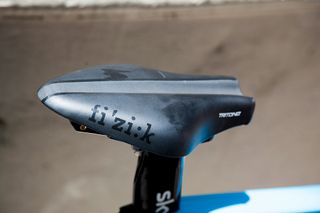
How do I choose the best bike saddle for me?
Finding the perfect saddle for you can take a little work.
First: try to determine what it is you don't like about an existing saddle - are there key aspects that don't seem right? If so, use those to determine what needs to change.
Riders who spend a lot of time in an aggressive position often want a pressure relief channel, while those who desire the freedom to move around a lot will favour a longer nose.
Next: shop around and look for models that are suited to your style of riding, level of flexibility and anatomy. Ideally, seek out brands that offer a proper fitting process such as the Selle Italia 'idmatch' that you'll find in all stores that stock their models.
Alternatively, hunt out the brands that offer test saddles from dealers. Fizik and ISM both provide this service.
Any returns policy on offer is important, too - some companies will allow you to buy a saddle to try it out and swap it for another if you are not happy with it within 30 days. This is very useful for testing a few options.
How can I make my saddle more comfortable?
Remember, changing your saddle can change your saddle height. If you get a new saddle, it is worth re-measuring your saddle height. It's also a good idea to check that the saddle is sitting at the correct position on the rails - getting this wrong can lead to discomfort elsewhere, such as knee pain.
Hopefully it goes without saying, but the shorts you'll wear on the bike make a difference to your overall comfort, too.
If you are regularly suffering from discomfort on the bike, make sure that you've invested in a good quality, properly fitting pair of cycling specific shorts before you blame the seat.
How we tested these bike saddles
How we test
Cycling Weekly has a team of testers with vast experience of testing bikes, components, clothing and accessories across a wide range of prices and spec levels, so they know bikes and tech inside out and have the experience to know what makes a great cycling product.
Our experience means that you'll have a consistent, in depth viewpoint, which is reflected in our product scoring. You can find out more on our How We Test page.
Get The Leadout Newsletter
The latest race content, interviews, features, reviews and expert buying guides, direct to your inbox!
Simon Smythe is a hugely experienced cycling tech writer, who has been writing for Cycling Weekly since 2003. Until recently he was our senior tech writer. In his cycling career Simon has mostly focused on time trialling with a national medal, a few open wins and his club's 30-mile record in his palmares. These days he spends most of his time testing road bikes, or on a tandem doing the school run with his younger son.
-
 'I spent 10 days in the ICU' - Anna Shackley opens up about heart condition and retirement
'I spent 10 days in the ICU' - Anna Shackley opens up about heart condition and retirementScot was forced to end her racing career at 22, but is now looking forward to her future as a sports director
By Tom Davidson Published
-
 'I've seen women do stuff that I didn't even know was possible': Ultra-cyclist Lael Wilcox on the people who inspire her
'I've seen women do stuff that I didn't even know was possible': Ultra-cyclist Lael Wilcox on the people who inspire herRound the world record holder shares stories of inspiration from her series of Komoot women’s rallies
By Tom Thewlis Published